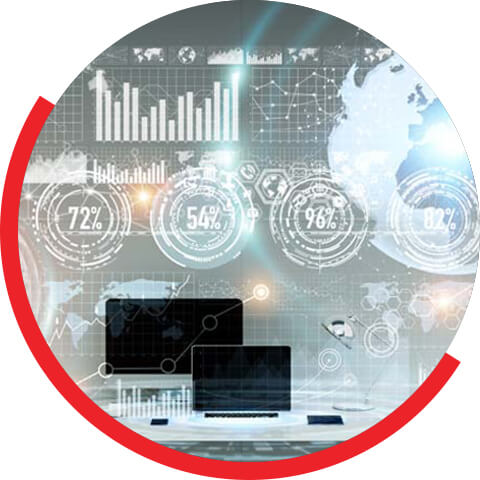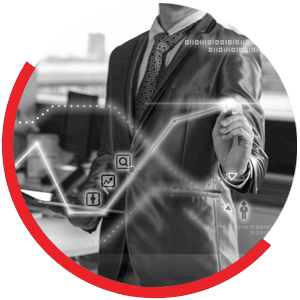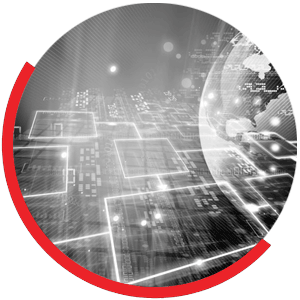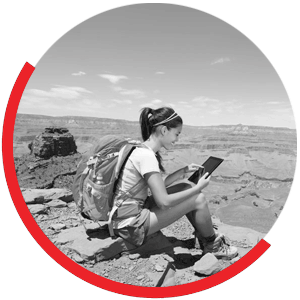You Know You Need An Enterprise Mobility Strategy But Don't Know Where To Start?
Here Are 35 Enterprise Mobile App Use Cases To Give You Some Inspiration
We've been in the Enterprise Mobility space for quite some time. With over 200 mobile apps under our belt and over 35,000 users on our Mobile First API & MBaaS (Mobile-Backend-as -a Service) Platform we have run into a lot of interesting use cases and we have seen some recurring themes. We have listed some of those common themes here which can be combined in many ways to make some pretty cool apps. Enjoy!
Utility, Hr & General Use Cases Collaboration
mColleagues is a good example of a collaboration application. They types of applications allow you to connect with and search for members of your organization or business group and message, chat, share documents with them.
CONFERENCING
Popular apps allow for one click dial in to conference calling and video calling systems so you do have to mess with access codes, dial in numbers and video chat links.
SCHEDULING
Employees can check their schedules and request time off. Another popular feature is notifications for schedule changes.
APPROVALS
Managers can approve PO's, time off requests and any other type of approval. Other popular features include risk assessment and system access approvals.mApprovals is a good example of an approval app.
EXPENSE REPORTING
Allows employees to easily report expenses incurred while on the job. Popular features include mileage calculators, purchase approval requests and receipt scanning.
ASSET MANAGEMENT
Asset management applications allow for you to keep track of company assets that employees take with them or share between themselves. Popular use cases include tracking and transfer of demo equipment and computing devices between employees.
TIME TRACKING
Time tracking apps are a convenient way for remote and onsite employees to clock in & out, check break times and stay accountable.
TRAVEL & PLANNING
Travel and planning apps allow for itinerary tracking, receipt scanning, location services and general travel planning for the employees on the go.
MEETINGS
Meeting apps are great for locating and checking conference & meeting room availability, reserving meeting rooms, taking meeting notes and and requesting meetings.
ENTERPRISE APP STORE
Enterprise apps stores allow for one convenient place for your employees to download company apps. After all, most companies do not want their B2E apps in a public app store. Popular features include role based access to apps and the ability to add 3rd party apps to the Enterprise App Store (Evernote for example). Check our mAppStore for a good example of an enterprise app store.
TASKS & PROJECTS
Task & project apps allow employees to track and assign tasks and update project statuses. Apps like this are great combined with collaboration apps to incorporate messaging.
SAFETY & PROCEDURES
These apps allow employees anytime access to instructions and procedures in the case of emergencies such as a fire. These apps include actionable features such as check in to safe locations and panic buttons.
POLLS, IDEAS & FEEDBACK
Feedback apps allow management and executives to collect ideas from employees, publish polls and get feedback to make better decisions about the company direction and culture.
REWARDS & MOTIVATION
Many companies have begun to deploy gaming and rewards applications to motivate and reward employees for health initiatives, productivity and more. Some companies implement features to allow employees to nominate one another for their behavior.
INTERNAL EVENTS
mEvents is a good example of an event app that can be used for internal company events like sales kickoffs, investor conferences, presidents club meetings, community service events and company outings among others.
HR SELF HELP
HR self help apps are commonly used for employees to view details on benefits such as medical and vacation hours, access payroll information or even report incidents to HR.
SALES & MARKETING USE CASES
SALES QUOTES & ORDERS
Sales quote and orders applications allow salespeople to easily generate quotations and sales orders for their customers wherever they are. Real time inventory integration is a must have for these types of apps. The great thing about these applications is that they can easily be turned around and given to your customers with only a few slight modifications. mOrders is a great example of this.
CATALOG & PRICING
mOrders is a great example of this as well. These types of applications allow you to provide catalog style functionality with product images, details, pricing and more.
CRM & CONTACTS
A must have for any sales organization, CRM applications provide customer and lead information at the fingertips of your sales people so they always have access to the latest information on their customers and prospects.
SALES INTELLIGENCE
Sales intelligence apps are where your sales people access the latest information on your companies offerings, competitors and must have knowledge. Knowledge is power and sales intelligence apps empower sales people to be prepared and the best they can be.
PRESENTATIONS
Presentations apps allow your sales and marketing people access to presentation materials like Powerpoint slides, videos, product demos, virtual tours and anything else they would want to show to a client to add a "wow" factor.
COLLATERAL
The one stop shop for sales and marketing people to access white papers, sales sheets, data sheets, product videos and any other sales and marketing collateral. A must have feature is to allow your sales and marketing folks to share any specific piece of collateral to prospects and customers right from the app.
TRADE SHOWS & EVENTS
They ability to show marketing material, schedule product demos, capture leads and enter sales orders from trade shows and events all from one single application is a very powerful thing for your sales and marketing people. That's exactly what these types of applications allow.
LEAD CAPTURE
Just like at events and trade shows, your sales people should be able to capture a lead from anywhere. Leads capture apps make it easy to capture leads and push them directly into your CRM. Popular features include business card scanning and recognition and CRM integration.
FIELD SERVICE USE CASES
APPOINTMENTS
Scheduling, viewing, updating and tracking client appointments is critical for any field service employee. The time to ditch the paper has passed long ago.
ROUTING & LOCATION
Routing and location apps commonly have features like driving directions, mileage tracking, and tracking of employee locations. One really cool feature I have seen allows the app to automatically send a notification, SMS or message to the customer when the employee is in-route to their location.
WORK ORDERS
Entering, updating and status tracking of work orders is a critical part of most field service employees job. Signature capture for customers to sign off on work orders is a popular feature for these types of applications.
TIME TRACKING
Time tracking applications allow employees to track time traveling and on-site with customers with a tap of the button. These applications can integrate with HR and Accounting systems for employee payroll and customer billing.
ASSETS TRACKING & MAINTENANCE
If your company has assets in the field then you likely have employees to need to keep those assets updated and in good working order. Asset tracking and maintenance apps allow your employees to access asset information, put in work orders and track asset movements and locations.
PARTS & SUPPLIES
Parts & Supplies apps allow field service personnel to access parts and supplies inventory and put in orders for repair jobs and work orders.
DOCUMENTS & CREDENTIALS
Documents & credentials apps allow field service employees to easily access important documents such as repair guides and also provide an easy way to manage and access their credentials when working on secure sites that require licensure or special clearance and identification.
OPERATIONS USE CASES
INVENTORY MANAGEMENT
Warehouse personnel are always on the move and seldom at a desk. Inventory management apps help them to check stock levels, perform counts, enter in new inventory and make adjustments. The most popular features are barcode scanning and ERP integration.
FACILITIES MANAGEMENT
Facilities staff can use facilities management apps to schedule maintenance and work orders, view repair jobs and check in inspection items from anywhere around the facilities which they maintain.
REVERSE LOGISTICS
Reverse logistics applications allow for anywhere access to returns and repair processing. These applications often include barcode scanning and RMA processing.
SECURITY
Apps for internal security personnel include features such as incident reporting, panic buttons, shift logs and patrol routing.
SUMMARY
While this list only scratches the surface of the use cases available for Enterprise Mobile Apps, I hope it gets you thinking about the possibilities for your organization. There is no such thing as a one size fits all solution and most apps will take bits and pieces from many of these use cases and combine them to come up with stellar applications for their organization.
Coming up with the use cases is also just part of planning your Enterprise Mobility Strategy. Other considerations such as Security, Business System Integration, App Management, Device Management, User Management and many, many others need to addressed. Luckily their is platform to help you address all of these things as well as the help you to rapidly develop your mobile apps. Go here for more information on the HaloMEM Platform and to learn how Halosyscan help you with your end to end enterprise mobility needs.














